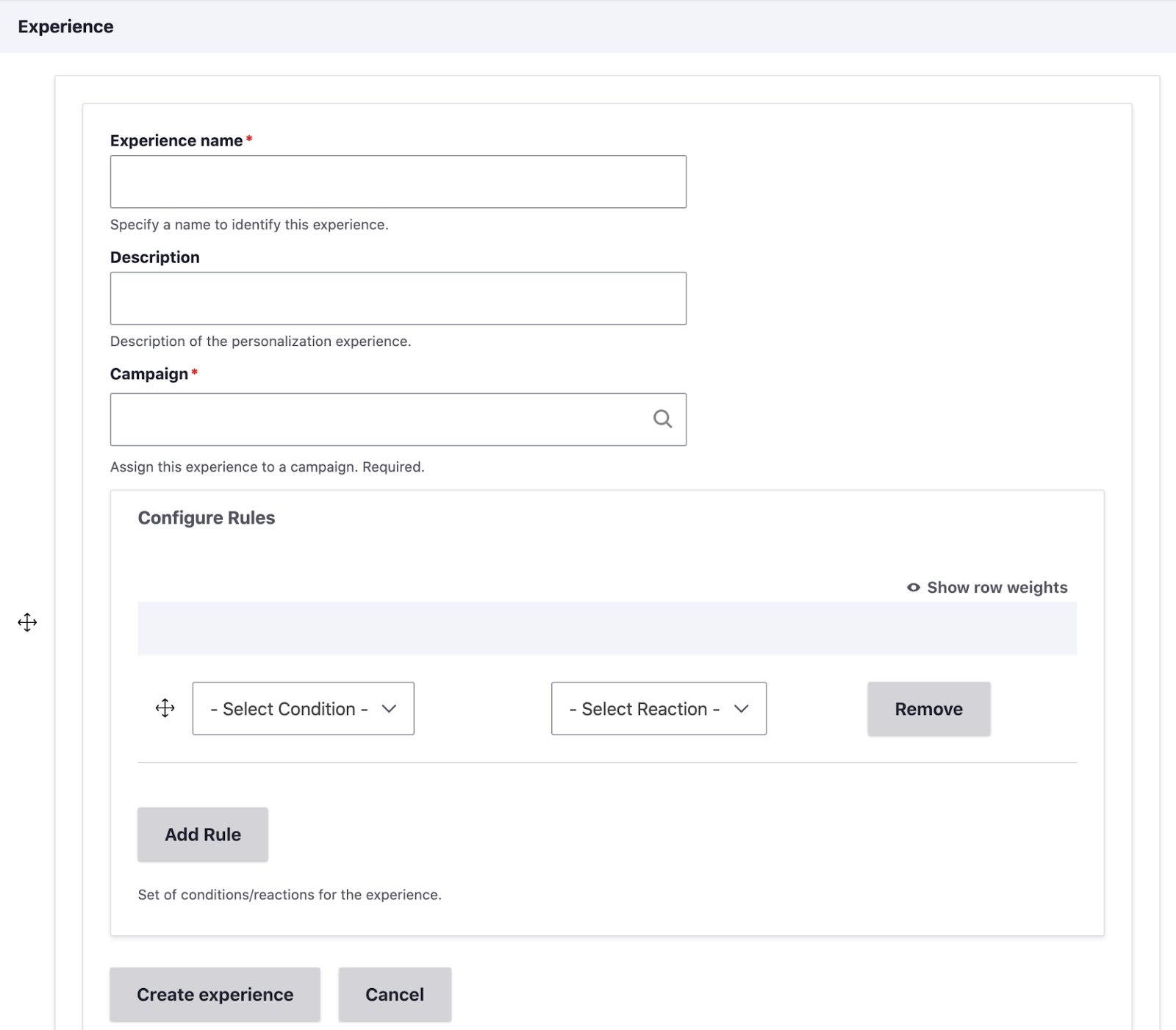Blog Insights
An Open Source Website Personalization Tool for Mission-Driven Organizations
At Forum One, we strive to provide solutions and tools that allow mission-driven organizations to make an impact in the world. An increasingly central MarTech approach to achieving this impact is through website personalization, a strategy that centers on the behaviors and interests of individual website visitors.
When incorporated within a larger content strategy, an effective digital personalization strategy can result in tangible, increased user engagement. Forum One is currently developing such a tool to empower content administrators to better shape the content that their audiences need, and in turn, increase the value of their websites. As we work primarily with open source CMS platforms, such as Drupal and WordPress, our tool is effective in its ability to integrate within the CMS as well as be flexible for organization-specific needs.
In our recent webinar, we shared how website personalization can drive audience engagement and how our new tool provides a flexible, content-focused way to quickly and effectively add personalization to your existing website. Before we get into the details of how we built our personalization tool, let’s first take a step back and learn a little more about website personalization and how it is typically implemented.
What is website personalization?
Website personalization is a data-driven approach to providing users with a unique and customized experience. Over the past decade, personalization has grown to become an industry standard on the web, where users are increasingly engaging with a website experience that is tailored to their interests and needs. Common uses of personalization include filtering content based on a user’s interests, notifying users of specific events, and recommending specific campaign actions and products of interest to them.
Why is personalization important?
In the commercial sector, the primary goal of personalization is to increase conversions and drive sales. It can also just make the user experience that much smoother so that website visitors don’t need to spend as much effort looking and clicking around to find what they need. The content relevant to them is served to them directly. In the nonprofit and government space, this also rings true: personalization allows your website users to more easily engage with the elements and services of your mission that matter to them most.
Users initially land on a website for the product, service, or content being offered; but they stay and return because of the experience. Personalization is important because it helps your website stand out. Online users are diverse and have different goals, interests, and motivations. Moreover, online users gravitate towards simplicity. Because personalization is data-driven, it allows you to predict and streamline processes or actions that users may hope to take. Integrating customized content and compelling experiences goes a long way in making your website memorable and satisfying for your target audiences.
How is personalization accomplished?
At a high level, personalization is achieved by collecting information about the user’s interactions with the website and consistently customizing content based on that collected user-specific data. Though you may have the technology to do this kind of data collection, providing unique experiences for every individual may prove ineffective without considering another very important marketing strategy: segmentation.
Segmentation involves dividing your website visitors into different groups based on similar characteristics derived from your collected user data.
Common ways to segment web users
- Geolocation segmentation. Location is one of the most common segmentation types used for personalization. Factors like weather, time of day, and significant cultural events can all be used to more effectively target visitors.
- Technographic segmentation. Customizing users’ experiences based on their technology stack is another common type of segmentation. The type of browser, device, or operating system can be collected in a user profile.
- Demographic segmentation. Segmenting by demographics can also be useful for targeting a specific group of users. Demographic data typically yields information such as age, occupation, marital and familial status.
- Behavioral segmentation. Through the use of analytics tools, you can track users’ online behavior and develop experiences that target them based on their previous actions. Furthermore, behavioral data gives you insight into how users interact with your website, allowing you to test the effectiveness of different experiences, refine existing segments, or create new ones.
Once segments have been defined, a strategy and set of experiences are developed to best target each group. As those series of experiences are combined, they can be used to establish personalized user journeys.
It can, however, be challenging to define experiences that are a true reflection of users’ expectations. Not every personalized experience will resonate. Therefore, personalization should be approached similarly to A/B testing, where each experience is constantly being tested, reviewed, and adjusted.
Forum One’s website personalization tool
Website personalization is not new, as we’ve pointed out above, and there are a number of applications already on the market that allow you to achieve all this and more with varying approaches. Website personalization tools include cloud-based solutions like Optimizly, platform-specific solutions like Acquia Personalization, or CMS-specific applications like Smart Content.
Since Forum One works primarily with open-source software platforms, such as Drupal and WordPress, we needed to provide an approach for our mission-driven clients that was CMS-specific in its administration but flexible in its fulfillment. Our tool aims to deliver a CMS-specific administration experience that works across both Drupal and WordPress so that content administrators have a consistent way of working between editing content and providing customizations for that content. Our solution makes it easy for content administrators to add an experience to any type of entity without the need for custom code. In other words, anywhere you can display content, you can add a personalized experience.
Our mission-driven organizations are able to collect user-specific data and store it in a user model stored based on the web visitor’s browser using a common technology like JavaScript (JS). The content is also displayed with JS so that the fulfillment of the customized content can be ported to different websites or CMSs and use a similar data source.
We manage the personalization tool through three components: campaigns, experiences, and rules.
- Campaigns are a collection of experiences that can be active or inactive and allow grouping experience per segment.
- Experiences are a unit of personalization based on the component of a website being displayed to the user. An experience can involve customizing components like a heading, call-to-action (CTA), or navigation menu.
- Rules are sets of conditions and reactions that inform the fulfillment of experiences. For example: “If the user is interested in the Social Justice topic, display a list of upcoming events and articles related to Social Justice,” and “If the user arrives at the website from an email or marketing campaign entry,, display a targeted CTA; otherwise display a default CTA suitable for all audiences.”

Forum One’s website personalization tool will be implemented in the coming months on a large nonprofit’s website that has a variety of target users and personas. We look forward to sharing an update soon!
Potential and growth of our tool
Given our approach to website personalization for mission-driven organizations that use open-source CMS solutions, as well as and the incorporation of UTM marketing in many organizations’ digital strategies, this opens the door to omnichannel marketing, so that marketing teams can create a personalized experience across all digital marketing channels, including email, social media, and search engine marketing (SEM). There are also a number of opportunities to experiment with machine learning and artificial intelligence to automate personalization tasks or enhance recommendations that can be provided to the end-user, so we’re excited to explore those avenues as well.
In conclusion, website personalization enhances how users interact with your website. It shows that you value your users’ needs and have made their interests a priority. Forum One’s personalization module is a flexible and intuitive tool, regardless of CMS type, for content administrators to create and edit personalized experiences. Our approach in defining campaigns, experiences, and rules allows content administrators to easily segment and target specific audiences so that users feel connected and remain engaged with your website.
